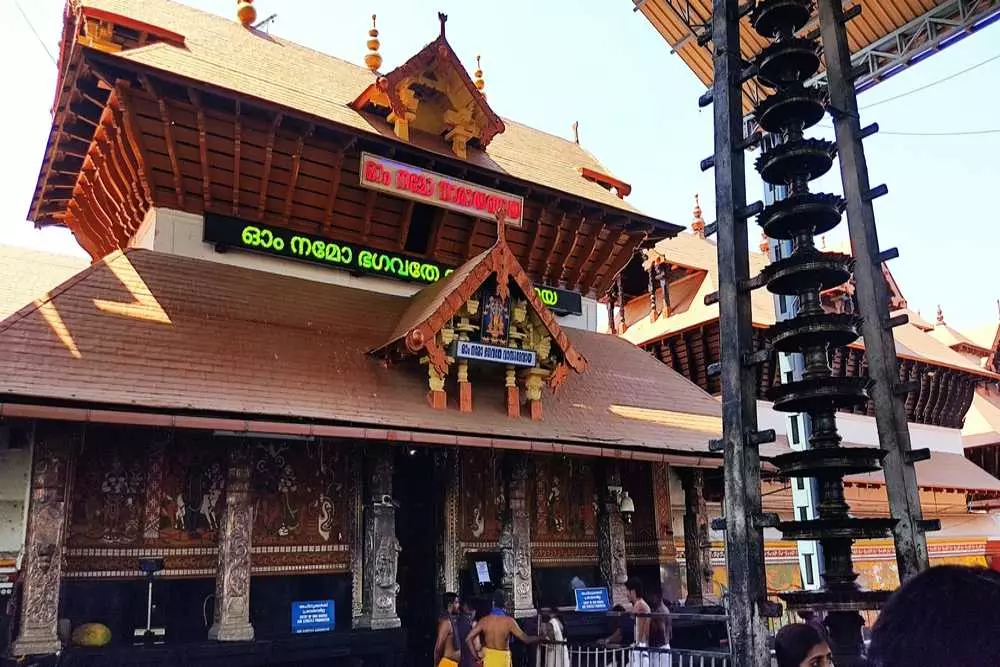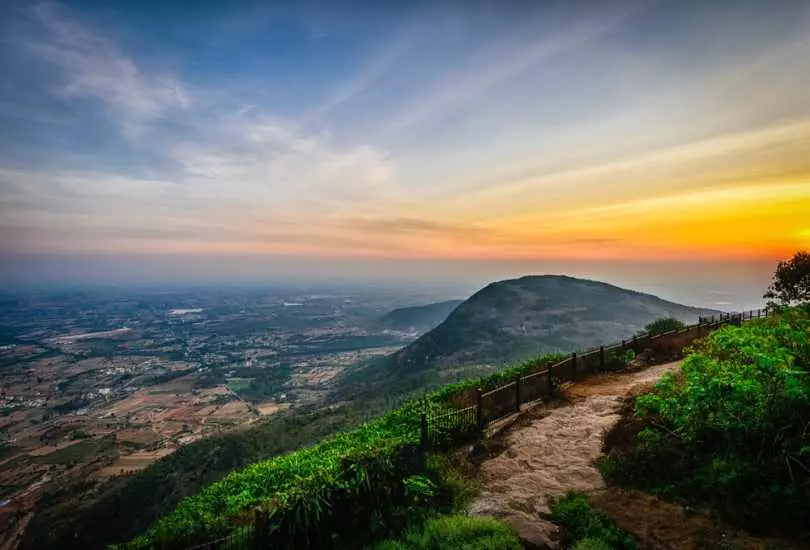Southern India is a region rich in history, culture and magnificent temples that offer a fascinating glimpse into intricate architecture, captivating rituals, and long-held beliefs. A journey through this part of India promises stunning temple discoveries around every corner. The architectural splendor found in south Indian temples in India is unparalleled, with towering, intricately carved towers known as gopurams soaring skyward above temple complexes spread across acres of land. Wandering through the temple halls and enclosures reveals the awe-inspiring workmanship found everywhere, from elaborately painted ceilings to meticulously carved columns and statues of deities seeming to come alive through their stunning attention to detail. Venturing inside the temple of South India holiest sanctum sanctorum housing the main deities gives a palpable sense of the sacred respect and decorative opulence accorded to them.
Observing rituals within these ancient temple complexes offers another glimpse into south India’s living heritage, where the chanting of mantras, the flickering of oil lamps, and the fragrance of fresh flowers have permeated temple spaces for centuries. From watching devotees make offerings and priests engage in elaborate ceremonial practices to partaking in unique customs at certain South Indian temples, like shaving one’s head, the chance to connect to these enduring traditions still celebrated today is incomparable. But beyond their visual grandeur and religious rituals, temples in South India often have a lesser-known wealth of intriguing legends and secrets waiting to captivate travelers’ imaginations if they take time to explore deeper and learn their history. Hidden underground tunnels, secret chambers obscuring intriguing relics, mysterious unexplained architecture, connections between one temple and its sister temple of southern india – these secrets whisper that there are more mysteries yet to uncover within these ancient sites of worship.
Contents
- 9 Popular Temples in South India with their Names:
- 1- Meenakshi Temple, Madurai, Tamil Nadu:
- 2- Brihadeeswara Temple, Thanjavur, Tamil Nadu:
- 3- Hoysaleswara Temple, Halebidu, Karnataka:
- 4- Kukke Subramanya Temple, Karnataka:
- 5- Guruvayur Sri Krishna Temple, Kerala:
- 6- Sabarimala Temple, Kerala:
- 7- Sri Ranganathaswamy Temple, Srirangam, Tamil Nadu:
- 8- Lord Venkateswara Temple, Tirupati, Andhra Pradesh:
- 9- Sri Padmanabhaswamy Temple, Thiruvananthapuram, Kerala:
9 Popular Temples in South India with their Names:
1- Meenakshi Temple, Madurai, Tamil Nadu:

Madurai, Tamil Nadu, is home to the Meenakshi Temple, one of the most well-known temples in South India. It is devoted to Lord Shiva’s avatar, Lord Sundareswarar, and his consort, Goddess Meenakshi. The temple is well-known for its spectacular architecture, detailed sculptures, and historical significance.
The temple complex has four main entrances, each marked with a gopuram (gateway) that can reach heights of up to 170 feet. The gopurams are a stunning display of the temple’s artisans’ ability and creativity, delicately carved with characters from Hindu mythology.
Several gods, including Ganesha, Murugan, and Vishnu, have shrines inside the temple. The temple’s main shrine is decorated with gold and priceless jewels in honor of the goddess Meenakshi.
The temple also features various halls, like the well-known 1,000-pillar hall, and a sacred tank where worshippers can bathe, known as the Potramarai Kulam.
The Meenakshi Temple in Madurai serves as more than just a place of worship to the local community. Meenakshi Thirukalyanam is a 10-day celebration held at the temple to honor the union of the goddess Meenakshi and the Hindu god Sundareswarar.
2- Brihadeeswara Temple, Thanjavur, Tamil Nadu:

Located in Thanjavur, Tamil Nadu, the Brihadeeswara Temple is also known as the Peruvudaiyar Kovil and is a UNESCO World Heritage Site. The Chola kingdom constructed it for the Hindu god Shiva in the 11th century.
The temple’s vimana (tower) is 216 feet high, making it one of the tallest temple towers anywhere in the world. The granite vimana is decorated with sculptures and carvings depicting stories from Hindu mythology.
The temple is also home to a gigantic Nandi bull statue that is 16 feet in length and 13 feet in height and was carved from a single stone. This one may be found in the temple’s courtyard among India’s most giant Nandi statues.
Several other temples in South India have taken design cues from the Brihadeeswara Temple since it is such a fine example of a Dravidian temple building. Lord Ganesha and Goddess Parvati are only two of the many deities honored by temples within the larger temple complex.
As a holy site for Hindus, the temple is visited by worshippers from all across India and the world. The Maha Shivaratri festival honors Lord Shiva and is just one of several annual celebrations at the temple.
3- Hoysaleswara Temple, Halebidu, Karnataka:

The town of Halebidu in the Indian state of Karnataka is home to the ancient temple known as the Hoysaleswara Temple. Dedicated to Shiva, it was constructed by the Hoysala dynasty in the 12th century.
Intricate carvings and sculptures abound in the temple, depicting themes from Hindu mythology, animals, birds, and other motifs. Chloritic schist stone was used to construct the temple, which houses shrines to both Lord Hoysaleswara and his wife, Shantaleswara.
Both of the temple’s main doors are elaborately carved and sculptured. The temple’s interior is ornate, with elaborate carvings on every stone. The temple’s 18-foot-tall Nandi bull statue in the courtyard is another popular attraction.
The Hoysaleswara Temple is among the finest examples of Hoysala architecture, distinguished by its use of soapstone and elaborate carvings and sculptures. The edifice was under construction for 86 years before it was abandoned because of wars and invasions.
The temple’s exquisite sculptures and carvings have earned it recognition as a UNESCO World Heritage Site. The Maha Shivaratri festival honours Lord Shiva and is just one of several annual celebrations at the temple.
4- Kukke Subramanya Temple, Karnataka:

The Kukke Subramanya Temple is a well-known Hindu temple in Subramanya in the Dakshina Kannada district of the Indian state of Karnataka. It is dedicated to the Hindu god Subramanya. Located on the banks of the Kumaradhara River, the temple is encircled by the Western Ghats.
The temple was constructed in the 16th century by the Vijayanagara Empire. The temple is dedicated to Lord Subramanya, Kartikeya, and Murugan. The spiritual significance and stunning scenery of the temple have made it famous. The faithful believe that Lord Subramanya can grant their wishes and heal them of illness.
Numerous ceremonies and celebrations are held regularly at the shrine. The annual Car Festival, which takes place between December and January, is the temple’s biggest celebration. During this celebration, the temple is decked out in flowers and lights, and a procession is held, pulling an altar containing an image of Lord Subramanya.
5- Guruvayur Sri Krishna Temple, Kerala:

Located at Guruvayur, in the Thrissur district of Kerala, the Guruvayur Sri Krishna Temple is a well-known Hindu temple devoted to the Hindu god Krishna. Spiritually significant and architecturally beautiful, the temple is one of Kerala’s most important pilgrimage centres for Hindus.
The Zamorin dynasty of Calicut, who ruled then, is credited with constructing the temple in the 16th century. Lord Krishna, known as Guruvayurappan, is the temple’s primary deity. The temple’s Dwajasthambam, covered in gold and 33.5 meters tall, is renowned throughout Kerala.
Numerous ceremonies and celebrations are held regularly at the shrine. The annual Utsavam takes place in February or March and is the temple’s biggest and best event. The temple is decked out in flowers and lights for this celebration, and an elaborate procession is held, with an idol of Lord Krishna riding on a chariot.
6- Sabarimala Temple, Kerala:

The Sabarimala Temple, devoted to the Hindu god Ayyappa, may be found in the Pathanamthitta district of Kerala, inside the Periyar Tiger Reserve. Because of its religious significance and stunning scenery, this temple is a popular destination for Hindus travelling through South India.
The monarch of Pandalam is credited with constructing the temple in the 12th century. Lord Ayyappa, Dharma Sastha, is the temple’s primary deity. The 18 golden stairs inside the temple are a prominent landmark.
Numerous ceremonies and celebrations are held regularly at the shrine. Every year in either December or January, the temple hosts its most important festival, the Mandala Makaravilakku. The temple is decked out in flowers and lights for this celebration, and an idol of Lord Ayyappa is taken out in the procession.
7- Sri Ranganathaswamy Temple, Srirangam, Tamil Nadu:

Located in Srirangam, in the Tiruchirapalli district of Tamil Nadu, the Sri Ranganathaswamy Temple is a well-known Hindu temple dedicated to Vishnu. Because of its religious and architectural significance, the temple is a popular destination for Hindus travelling through South India.
The temple was believed to be constructed during the Chola dynasty in the 11th century. Lord Vishnu, or Ranganatha Swamy, is the temple’s primary deity. Spread across 156 acres, and the temple complex is enclosed by seven walls to symbolise the seven levels of human awareness.
Numerous ceremonies and celebrations are held regularly at the shrine. Vaikunta Ekadasi, celebrated annually in the temple in December or January, is its most significant event. The devotees celebrate this event in the hope that the gates of heaven will open and Lord Vishnu will bestow his blessings upon them.
The once-every-12-years Ranganatha Ratha Yatra is another reason the temple is so well-known. At this celebration, devotees ride a chariot decked up in flowers and lights in honor of Lord Ranganatha.
8- Lord Venkateswara Temple, Tirupati, Andhra Pradesh:

The Lord Venkateswara Temple, commonly called the Tirumala Temple or the Tirupati Balaji Temple, is a popular and holy Hindu pilgrimage site in southern India. The temple is dedicated to Lord Venkateswara, an incarnation of Vishnu, and is situated in the Andhra Pradesh hill town of Tirumala. The temple was built over two thousand years ago and has undergone numerous renovations and expansions.
One of India’s most opulent religious buildings, this temple is renowned for its Dravidian-style design. Lord Venkateswara, the principal deity, wears a crown of gold and diamonds because he is revered as the supreme and most good-hearted god in Hinduism. Several smaller shrines honoring other deities can be found scattered throughout the temple grounds.
To seek Lord Venkateswara’s blessings, millions of worshippers worldwide travel to the temple each year. Thousands of worshippers visit the temple yearly for the annual Brahmotsavam celebration and the daily sevas or services.
9- Sri Padmanabhaswamy Temple, Thiruvananthapuram, Kerala:

Another well-known South Indian temple, Sri Padmanabhaswamy Temple, may be found in the middle of Thiruvananthapuram, the state capital of Kerala. The temple is famous for its beautiful design and detailed carvings, and it is dedicated to an incarnation of Vishnu known as Lord Padmanabha.
The temple is one of the richest in India and is thought to be over a thousand years old. Lord Padmanabha, the supreme deity, is shown here dozing on a serpent, his right hand raised benevolently. There are other smaller shrines within the temple complex, each one dedicated to a different deity.
The Navratri celebration, held yearly at the temple in India, is widely regarded as the most spectacular event. During the event, elephants are paraded around the streets while musicians and dancers perform traditional routines and crowds feast.




One thought on “Exploring the Secrets of Temples in South India”
nice blog